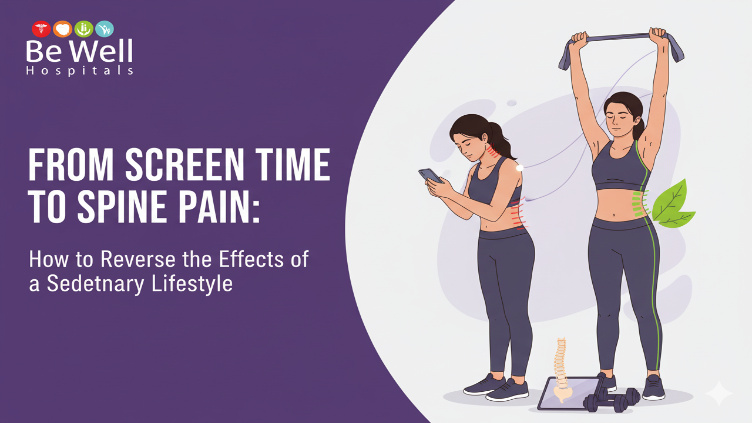
The Modern Health Trap: Sitting All Day
We’re connected more than ever – but also more seated than ever.
Work, entertainment, shopping, socializing – almost everything now happens through a screen. The result? Our bodies are stuck in one position for hours, while our minds race at full speed.
It’s easy to dismiss back stiffness or shoulder pain as part of modern life. But over time, these “minor” issues turn into chronic discomfort, poor posture, and even long-term mobility problems.
The good news? You can reverse most of it – with awareness, small daily movement, and better habits.
Why a Sedentary Lifestyle Hurts More Than You Think
Sitting isn’t harmful by itself. The problem is how long and how often we sit without moving.
When you stay inactive for extended periods:
- Your spine stays compressed.
- Muscles around the neck, shoulders, and lower back weaken.
- Blood circulation slows down.
- Energy levels dip, and metabolism slows.
The body is designed to move. When it doesn’t, every system – from digestion to mental health – feels the impact.
The Screen-Time & Posture Connection
Think about your daily routine:
Laptop on the desk, phone in hand, eyes fixed forward, shoulders rolled in. Sound familiar?
Poor posture while working or scrolling can:
- Strain neck and back muscles
- Lead to rounded shoulders
- Cause lower back tightness
- Reduce lung capacity over time
It’s not the screens that are the enemy – it’s the lack of breaks.
How to Reverse the Effects – Starting Today

You don’t have to overhaul your lifestyle overnight. These small, consistent changes make a real difference.
Follow the 30:3 Rule
Every 30 minutes of sitting should be followed by at least 3 minutes of movement.
Stand, stretch, refill your water, or walk to the next room. It’s that simple.
Fix Your Desk Setup
- Keep your screen at eye level.
- Sit with your feet flat on the floor
- Use a chair that supports your lower back.
- Keep shoulders relaxed and wrists straight.
A few tweaks in posture can save hours of future pain.
Strengthen, Don’t Just Stretch
Stretching helps, but strengthening is what reverses damage.
Focus on your core, back, and shoulders – the areas most affected by long sitting hours. Even 10 minutes of daily bodyweight exercise can help realign your spine.
Unplug with Purpose
Take micro digital breaks – look away from screens, step outdoors, or simply stretch your arms and back.
Your eyes, neck, and brain will all thank you.
Add Movement into Routine Tasks
You don’t need an extra hour – you need small swaps:
- Take calls while standing or walking.
- Use stairs instead of lifts.
- Park a little farther.
- Walk after meals.
Movement doesn’t have to be dramatic to be effective.
Prioritize Sleep and Hydration
Good sleep restores your spine and muscles after long hours of sitting.
Hydration helps prevent stiffness – so keep a water bottle handy at your desk.
Reclaiming Your Natural Posture
Posture isn’t just about appearance – it affects breathing, mood, and energy.
When your spine is aligned, your body works efficiently. When it’s not, even small movements can feel heavy.
Improving posture takes time, but awareness is the first step. Notice how you sit, adjust consciously, and your body will start to adapt.
The Bigger Picture
A sedentary lifestyle doesn’t just hurt your back – it quietly reshapes how your body functions. The longer you ignore it, the harder it becomes to undo.
But here’s the good part: your body is incredibly forgiving. Start moving today, and it’ll respond faster than you think.
Small daily choices – like a stretch between meetings or a walk after dinner – are what keep you pain-free, focused, and active for years to come.
Key Takeaways
Sitting for long hours affects your spine, energy, and mood.
Frequent movement and better posture can reverse most effects.
Awareness and consistency matter more than intensity.
A little movement every hour keeps your body – and your mind – in balance.
If your body feels the effects of long workdays, it’s time to reset.
Start small – stand up, stretch, and move more every day.
And for a complete wellness check, consider an annual health assessment to make sure your posture, muscles, and metabolism are in sync.
Because health isn’t built in the gym – it’s built in how you move, every day.
